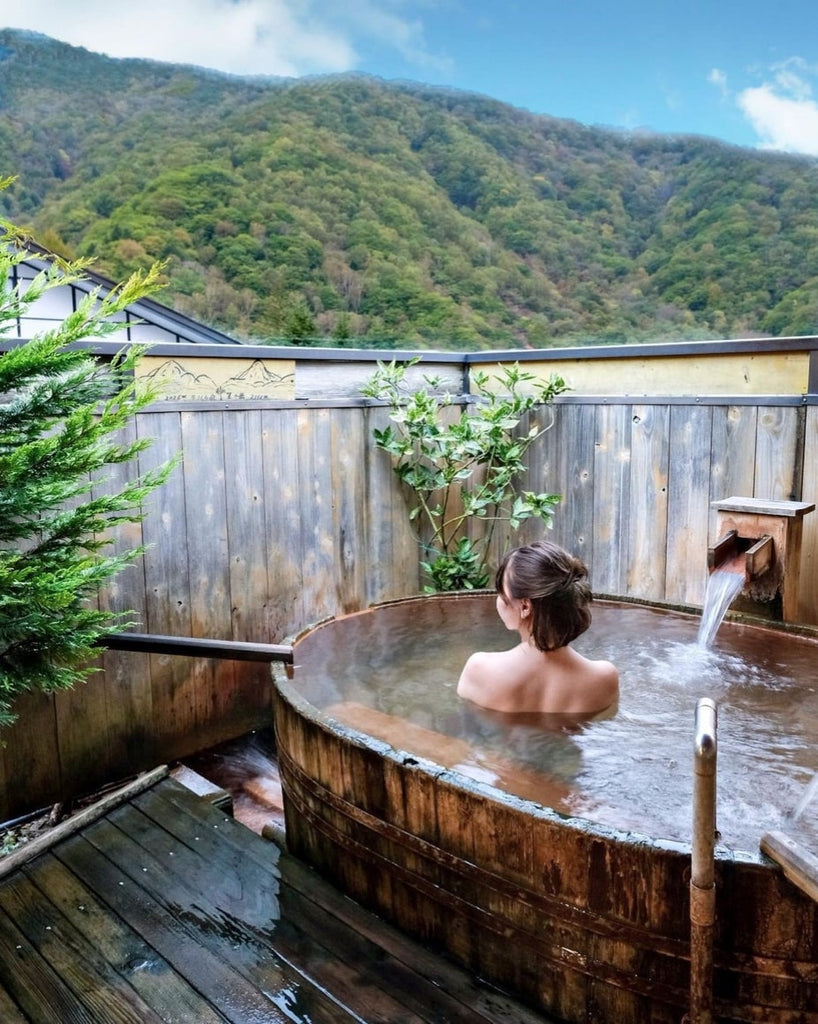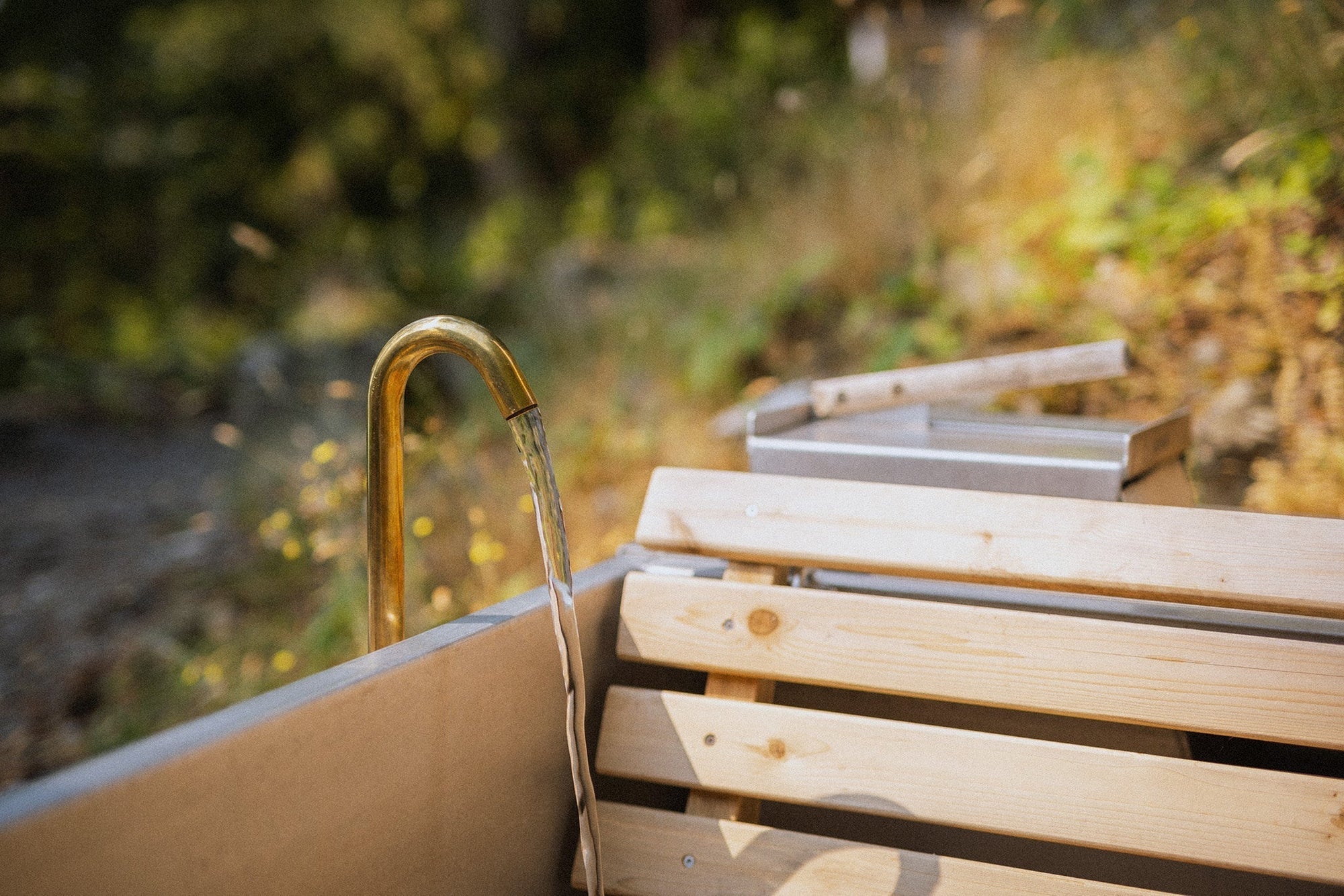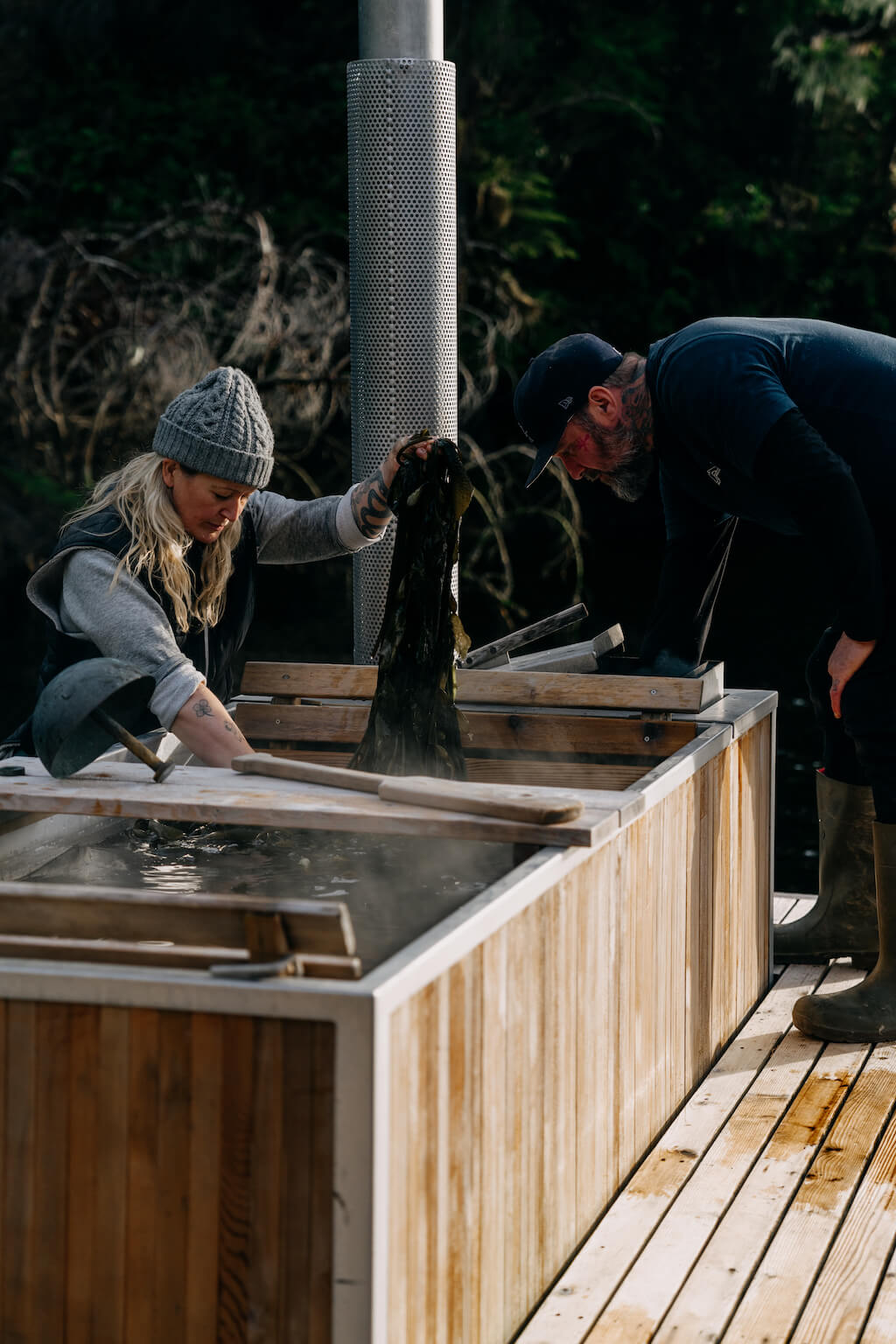Outdoor soaking tubs and minimalist hot tubs are growing in popularity throughout North America. But what many might not know is that this trend has been influenced and inspired by the tradition of ofuro, Japanese soaking tubs.

A bit of background on ofuro tubs
Bathing has been a core part of Japanese culture for centuries. What’s most commonly known to North Americans is the tradition of onsen, natural hot springs baths rich in minerals that dot the country. As a volcanic archipelago, Japan is home to over three thousand of these naturally-occurring outdoor hot springs. Many people in Japan are passionate about onsen not only for its therapeutic and soothing qualities, but also as a way to connect with nature and with people.

With onsen being so popular, it isn’t much of a surprise that indoor bathing is also a common practice, since it’s an even more accessible way to soak in steaming water.

An ofuro (also called furo) is a Japanese wooden bathtub often with deep, straight sides. Simple and beautiful, ofuro tubs are intended more for relaxation and warmth than for actual bathing and washing. In fact, it’s typical in Japan to shower and rinse off before entering the ofuro itself, which also makes it easier to share the tub and get multiple uses out of the water without the use of chemicals.
Ofuro tubs are an iconic part of Japanese culture. Rather than being seen as a luxury or an extra—like so many of us in North America view hot tubs or even simply taking a bath for relaxation—bathing in Japan is viewed as a key part of everyday life.

The design of ofuro tubs
Ofuro tubs can be made out of a wide range of materials, but traditionally they’re crafted from wood, like hinoki, an aromatic wood. Ofuro tubs are typically deep enough that you can be submerged up to your shoulders when sitting in the steaming hot water. They’re often three or four times deeper than North American bathtubs.
Ofuro tubs are artfully designed and compact, ideal for to either bathe alone or as a two-person tub. The minimalist design of the tub encourages the bather to relax, with little to focus on but the experience of soaking itself.

GOODLAND’s Wood Burning Hot Tub
Crafted from western red cedar with clean lines and with an essentialist ethos, the GOODLAND Wood Burning Hot Tub echoes some of the same design qualities and philosophies of ofuro tubs.
With similarly steep sides, a small size, and primarily constructed out of wood, the wood burning hot tubs are also heated naturally from wood, just like traditional ofuro tubs. While ofuro tubs use hinoki—or Japanese cypress—this tub uses western red cedar, which is a cousin of hinoki. Western red cedar is a material local to the west coast of Canada, where GOODLAND is based—allowing us to use a natural and sustainably harvested material.
Rather than being for indoor use, GOODLAND Hot Tubs are for soaking in the great outdoors. Soaking in nature encourages a sense of pause—slowing down, breathing in fresh air, and finding a sense of connection to oneself and to others.
With little more than a few split logs and an armful of fallen branches, the GOODLAND Hot Tub heats up in just 90 minutes—a restorative and grounding ritual itself. The wood burning hot tub is a soothing soak for one or two adults, but can even fit a small family of four. The all-season tub is crafted entirely in Winnipeg, Canada, using a combination of traditional craftsmanship with state-of-the-art machinery. This allows us to maintain an ultra-high quality standard, creating a wood fired bathing experience that’s easy, comfortable, safe, and more sustainable.
If you enjoy the art of soaking as much as we do, take a look at "The Peace of Pause" or introduce yourself to Hamam Magazine, a journal focused on bathing.
Image credits // Home Bathing, Baron Raimund von Stillfried, Kusakabe Kimbei, c 1870s–1890s; Hirayu Onsen, Hirayu No Mori, Japan; private onsen in Tsuyukusa Ryokan, Japan, @eva.anggeriani; outdoor soaking tub, Shisui, Kobe, Japan.


